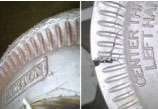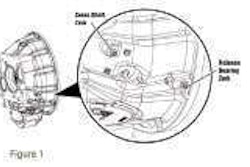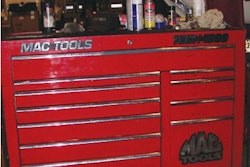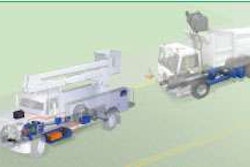If you find signs of slip/heat on a fan drive, it’s an indication of an underlying problem, according to Horton.
Slip/heat can be found in all applications with on/off and two-speed fan drives.
 There are many causes of slip/heat damage. You must find the cause before you can properly repair the damage.
There are many causes of slip/heat damage. You must find the cause before you can properly repair the damage.Signs of slip/heat include: Heat cracks going past the perimeter of the fan mounting disc, a bubbled appearance in the fan mounting disc, excessive friction facing wear, worn fan mounting friction disc or piston friction disc or premature fan mounting disc failure.
There are many causes of slip/heat damage, and each repair depends on the underlying cause.
If the fan drive was paired with a fan that is too large, refer to the original equipment manufacturer’s specifications and replace either the fan or the fan drive.
If there appears to be an obstruction, check for a loose, damaged or bent fan shroud or fan. Remove the obstruction and replace any damaged components.
If the wrong repair kit was used during maintenance, repair the fan drive with the appropriate kit, or replace the fan drive with a new or remanufactured unit.
If the wrong fan drive was installed, Horton says the solution might be an upgrade of an on/off drive to two-speed technology with a conversion kit, or a replacement with a new or remanufactured drive.
Another cause of slip/heat is low air pressure from a restricted air line, solenoid valve or solenoid valve filter assembly.
You also will want to check for system air leaks. These can be internal to the fan drive; internal to the solenoid valve and filter assembly; within the air line supplying air to the solenoid valve or from the solenoid valve to the fan drive; or leakage at the air line fittings.
To determine if an air leak is the cause of slip/heat, Horton suggests that while air is being applied to the fan drive, listen for the sound of a leak around the solenoid valve, filter assembly, air lines and fittings. Soapy water also can be sprayed around the spring housing, sheave and bleed holes. Bubbles will appear if there is an air leak.
Excessive cycling of the fan drive also can be an issue. This can be the result of a mechanical or electrical problem, or an improper setting such as: overcharged air-conditioning Freon; blocked airflow caused by a restriction in front of the radiator; poor or loose electrical connection; faulty thermal or air temperature switch, solenoid valve or engine control module; or improper temperature control or ECM setting.
If excessive cycling is the result of a Freon overcharge, adjust the Freon to the original equipment manufacturer’s specifications and install a new liner kit.
If excessive cycling is caused by a restriction in front of the radiator blocking air flow, check for proper shutter operation, winter front or other restrictions in front of the radiator.
Low pressure because of a restricted air line also could cause excessive cycling. Replace the air line if it appears to have a restriction and also replace the valve or clean the filter.
According to Horton, the minimum air pressure required to disengage the fan drive is 90 psi. After the air pressure problem has been resolved, repair the fan drive with the appropriate repair kit or replace the fan drive with a new or remanufactured fan drive.
Verify electrical connections and replace the air temperature switch or thermal switch if they are faulty.
Check the ECM to ensure it is set to manufacturer’s specifications.
Improper temperature control settings also can cause excessive cycling. According to Horton, the thermal switch should engage the fan drive at 10°F higher than the full open temperature of the thermostat.
If the excessive cycling is caused by a non-exhaustive solenoid valve, or the valve not engaging properly, check for a plugged exhaust or intake port on the valve, check and clean the filter or replace the valve.










